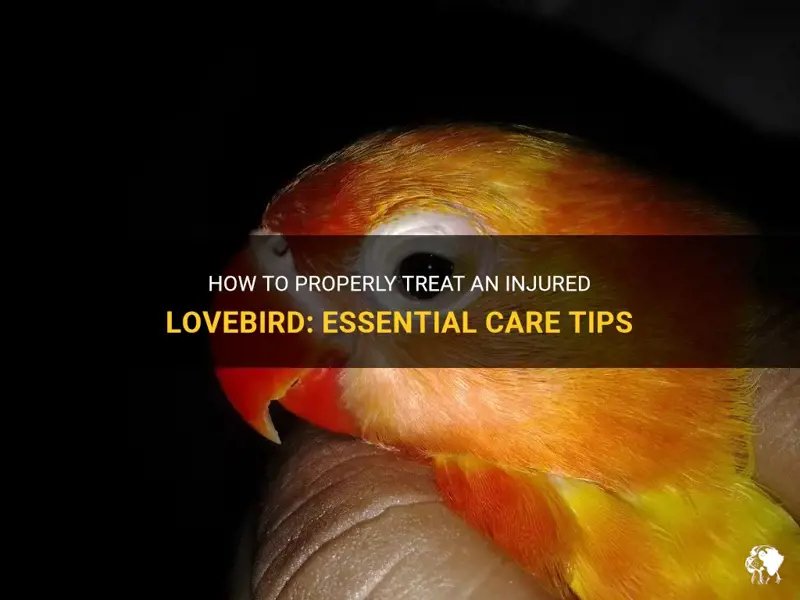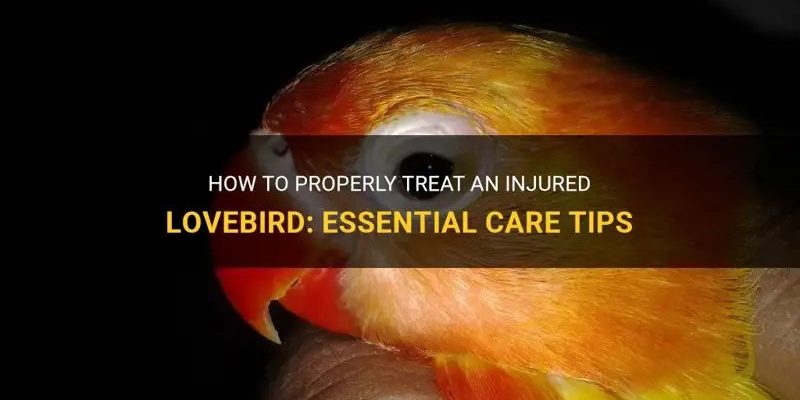
Most pet owners know the basics of care: good food, a clean cage, and plenty of love. Yet many might miss the subtler signs of illness that can creep up on these feathered companions. It’s a lot like when a friend seems a bit off, but you can’t put your finger on it. Understanding the signs of illness in lovebirds and how to treat them can help you act quickly when something’s not quite right.
In this guide, we’ll explore the common signs of illness in lovebirds, how to interpret these signs, and what steps you can take to ensure your feathered friend gets back to their playful self.
Common Signs of Illness in Lovebirds
When lovebirds are feeling under the weather, they can exhibit a range of signs. Just like humans have different symptoms when they’re sick, lovebirds do too. Pay attention to these behaviors so you can catch any issues early.
- Fluffed feathers: If your lovebird seems to be puffing up its feathers and not preening, it might be a sign of discomfort or illness. A bird that feels unwell often tries to conserve heat by fluffing up.
- Loss of appetite: If your lovebird suddenly stops eating or drinking, that’s a big red flag. Birds are usually enthusiastic eaters, so any changes in this behavior should be monitored closely.
- Changes in droppings: The droppings of a lovebird can tell you a lot about their health. If you notice any drastic changes in color, consistency, or frequency, it’s worth investigating.
- Decreased activity: Lovebirds are usually quite active and playful. If yours seems lethargic or spends an unusual amount of time resting, take note. This could indicate that something’s wrong.
Understanding these signs can help you build a picture of your lovebird’s health, much like piecing together a puzzle. Noticing even one symptom could be your first clue that your bird needs a little extra TLC.
Behavioral Changes: What to Look For
Sometimes, it’s the subtler behavioral changes that can hint at an underlying illness. If your lovebird is not acting like its usual self, it could be a sign that something’s off.
- Increased aggression: If your normally sweet lovebird suddenly becomes nippy or hostile, that could indicate stress or discomfort. Birds often resort to aggression when they feel threatened or unwell.
- Isolation: Lovebirds are social animals, so if you notice your bird hiding away or avoiding interaction, that’s worth noting. An isolated bird may be trying to communicate that they’re feeling unwell.
- Excessive grooming: On the flip side, if your lovebird is over-grooming, it might be a sign of anxiety or illness. It’s their way of coping with stress or discomfort.
By keeping an eye on these behaviors, you can catch potential problems early. Think of being aware of your bird’s personality as being tuned into a friend’s mood swings. The more familiar you are with their usual behavior, the more easily you’ll spot when something’s wrong.
Physical Symptoms to Watch For
Physical symptoms are often more apparent than behavioral ones, but they can still be easy to overlook. Here are key signs to keep an eye out for.
- Nose or eye discharge: If you see any discharge coming from your lovebird’s nose or eyes, it could indicate an infection. Healthy lovebirds typically have clean nostrils and bright eyes.
- Labored breathing: If your lovebird is making unusual sounds or breathing heavily, that’s a reason to act fast. A bird should breathe comfortably without wheezing or open-mouth breathing.
- Changes in weight: Sudden weight loss can be alarming. If you notice that your lovebird feels unusually light when you handle them, it might be time for a vet visit.
These physical signs can help you gauge whether your lovebird is in distress. It’s like when you catch a glimpse of someone’s face and realize they’re not feeling well—those hints can lead to a deeper understanding of what’s happening.
How to Treat Common Illnesses in Lovebirds
If you notice any of the signs we’ve discussed, acting quickly is vital. Here’s how to address some common illnesses.
- Consult a vet: The first step is always to contact an avian veterinarian. They can provide a proper diagnosis and treatment plan tailored to your lovebird’s needs.
- Quarantine if necessary: If you have multiple birds and one appears sick, it’s smart to separate the healthy ones from the sick one to prevent any illness from spreading.
- Adjust the environment: Make sure your lovebird’s living space is clean, safe, and stress-free. Sometimes, improving their environment can help them recover faster.
By following these steps, you can ensure a swift response to your lovebird’s needs. It’s much like taking a friend to the doctor when they’re feeling blue—you want to act fast before things get worse.
Preventive Care for Healthy Lovebirds
Prevention is truly the best medicine. Keeping your lovebird healthy can reduce the chances of them getting sick in the first place. Here are some straightforward tips to keep your feathery friend thriving.
- Quality diet: Ensure your lovebird has a balanced diet rich in seeds, pellets, and fresh fruits and veggies. Just like humans, birds thrive on variety!
- Clean habitat: Regularly clean the cage and change the water to prevent bacterial growth. A clean space can significantly impact your bird’s overall health.
- Regular check-ups: Don’t wait for signs of illness to see a vet. Regular check-ups can catch potential issues before they become serious.
These preventive measures are like routine maintenance for a car. The more care you put in upfront, the better the performance and longevity down the road.
What to Do in Emergencies
Even with the best care, emergencies can happen. Knowing how to handle these situations can make a big difference for your lovebird.
- Stay calm: Birds can pick up on your stress, so keeping your cool is crucial. Panic won’t help your lovebird.
- Have a first-aid kit: Put together a basic lovebird first-aid kit. Include items such as bandages, antiseptic wipes, and a list of emergency contacts.
- Quick transport to the vet: If your lovebird is in distress, have a secure carrier ready for a swift trip to the vet. Don’t hesitate—time can be of the essence!
Emergencies can be daunting, but having a plan can turn a stressful situation into a manageable one. Think of it as knowing how to handle a flat tire—you want to be prepared for anything that comes your way.
Caring for a lovebird comes with its joys and challenges. Recognizing the signs of illness and knowing how to treat them can make all the difference in your pet’s health and happiness. Just like nurturing a friendship, being attentive to your lovebird’s needs will build a stronger bond.
Monitoring their behavior and health ensures you stay tuned into their little quirks and changes. By being proactive and providing the best care possible, you’ll help your feathered friend live a long, vibrant life. After all, your lovebird deserves nothing less than the best!

